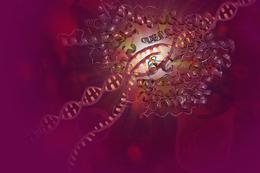The study, which has yet to be published, was presented at the Annual Meeting of the American Society of Human Genetics in Washington DC this week. The findings suggest that as many as 97% of gene transcripts are being altered once RNA molecules have been assembled into a template from the DNA code. However, some researchers warn that the results, although intriguing, might simply be the result of sequencing errors.
According to the textbook model of how genes are expressed, DNA is first transcribed to RNA, and the triplets of RNA bases formed in this process are then translated into specific amino acids in order to build proteins. But sometimes, RNA seems to edit the message, using specific mechanisms to alter or switch certain bases.
The phenomenon has been observed in a range of organisms and seems to increase the diversity of transcripts produced from a particular gene. It has been linked to cell metabolism in plants and brain function in mice; misregulation of RNA editing has also been implicated in several human diseases, including the neurological disorders amyotrophic lateral sclerosis and epilepsy.1
But how widely the process occurs or what the function of the edited transcripts might be is largely mysterious, in part because researchers have not had the tools to widely map DNA and RNA sequences in the same individual. "It's not well appreciated that it even exists," says Joseph Pickrell, a graduate student in the department of human genetics at the University of Chicago in Illinois, who attended the talk but was not involved in the latest work.
Mix and match
Mingyao Li, a biostatistician at the University of Pennsylvania in Philadelphia, told the conference that she and her colleagues compared the DNA and RNA sequences of 27 individuals included in the 1000 Genomes Project, which aims to sequence the genomes of 1,000 people. The researchers sequenced the individuals' RNA from cell samples, then checked for differences against those participants' whole-genome sequences, as reported by the 1000 Genomes Project.2
The results suggest that a vast amount of editing could be occurring across the genome, with the researchers identifying more than 102,000 potential editing events. They also estimated that about 97% of transcripts produced from any gene are edited - a rate that Li describes as "surprisingly high". Most RNA-editing events studied so far have involved two specific types of alteration: conversion of the DNA base adenine to inosine, and switching of the base cytosine for uracil. But many of the differences that Li and her colleagues found have not been observed before.
It is not clear what happens to the edited RNA, Li told the conference, for example whether it is translated into proteins or simply degrades.
The researchers cross-checked their findings against RNA sequences for the same individuals published earlier this year,3 and found 89% agreement between the two sets of data.
All in the detail?
But other researchers are sceptical. Emmanouil Dermitzakis at the University of Geneva in Switzerland, a geneticist with the 1000 Genomes Project, argues that the DNA sequences the authors used were not intended to be accurate enough for such close comparisons, meaning that many of the supposed mismatches might simply be down to sequencing errors.
"We need to do this right, so we can properly quantify the phenomenon," he says, noting that it will probably vary for different cell types. His group is hoping to look at the question in individuals partaking in the 1000 Genomes Project who have been sequenced at high accuracy, but so far only a few such sequences are available.
Pickrell agrees that sequencing errors may be a problem. "There are a number of reasons RNA could not match DNA that are not biological," he says. The only way to check would be to re-sequence a large number of the genes that seem to be edited. "If the study holds up," he says, "it will be fascinating."
Li and her colleagues are currently conducting such re-sequencing, and presented data to the conference from a handful of sites. The data seem to confirm the occurrence of RNA editing. However, she and her co-workers declined to comment on the work ahead of publication.
References
- Maas, S. , Kawahara, Y. , Tamburro, K. M. & Nishikura, K. RNA Biol. 3, 1-9 (2006).
- The 1000 Genomes Project Consortium Nature 467, 1061-1073 (2010).
- Montgomery, S. B. et al. Nature 464, 773-777 (2010).




The chicken or the egg? Seems the real creator is hiding in the unknown and the pretenders imitate this practice to fool the rest of us who seem only too happy to have something to eat to even bother asking that question?
What can a pretender do but wait quietly in the wings and try to guess those potential moves and control them? Must drive the pretenders mad not being able to control these little actors on stage, only their reflections.